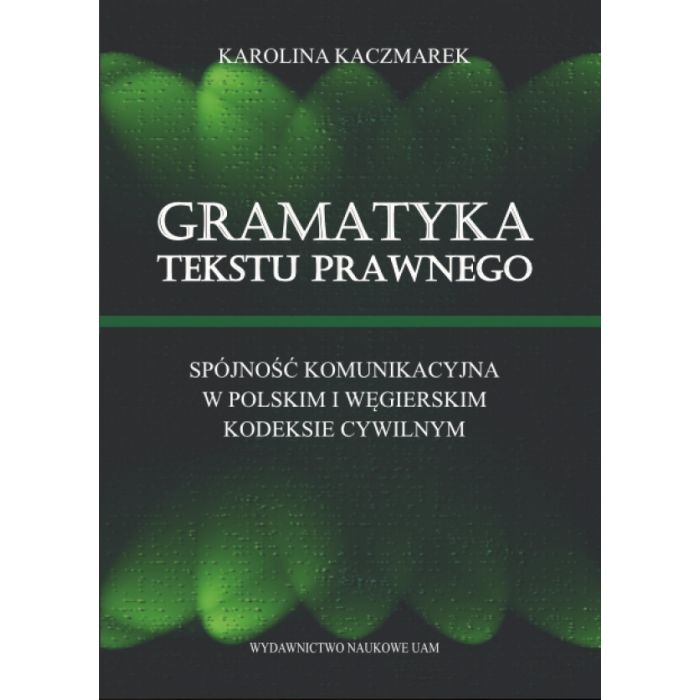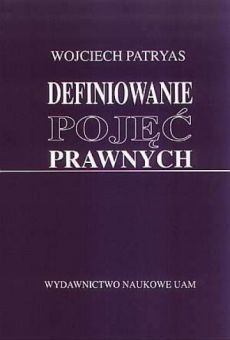Gramatyka tekstu prawnego. Spójność komunikacyjna w polskim i węgierskim kodeksie cywilnym
- In Stock: in stock
- ISBN: 978-83-232-3067-0
- Category: OUTLET, Linguistics, Law
- Year of publication: 2016
W ramach doktryny prawnej szeroko dyskutowaną kwestią jest zasada powszechnej dostępności do prawa poprzez właściwy przekaz językowy. Normy prawne komunikowane są przez język, a sposób jego użycia może w znaczącym stopniu wpłynąć na jasność przekazywanych treści. Tematem książki są metody ustalania środków językowych i czynników pozajęzykowych, które mogą wpływać na uzyskanie spójności komunikacyjnej tekstów prawnych, w szczególności tych, które są lub będą sformułowane w języku polskim lub węgierskim.
Kompleksowość problematyki związanej z tekstem prawnym powoduje konieczność połączenia kilku dziedzin nauki. Podstawowy jest tu aspekt językoznawczy, jednakże uwzględniona jest też perspektywa prawna oraz translatologiczna. Niewątpliwie, dla wszystkich trzech wymienionych wyżej dziedzin istnieją wspólne płaszczyzny, a ich zestawienie może być nie tylko pożyteczne, ale niekiedy wręcz niezbędne dla osiągnięcia celu, jakim jest stworzenie takiego tekstu prawnego lub jego tłumaczenia, którego spójność komunikacyjna byłaby wystarczająca nie tylko dla prawników, ale również dla przeciętnego odbiorcy.
This work presents proposes a kind of text grammar where special attention is paid to the properties of legal text. Texts may be analysed from many perspectives, hence the grammar presented here encompasses a wide spectrum of problems related to semantic, grammatical, pragmatic and cognitive perspectives. On the one hand, general characteristics of texts are discussed, along with the specific proporties of legal texts, in particular Polish and Hungarian legal texts, and issue of translating such texts. The analysis covers how lexical or grammatical repetitions influence the coherence of a text, in what ways textual information is distributed, how the mechanism of condensation works, and what is the basis for drawing conclusions about the meaning of a text. Particular attention is given to issues related to textual cohesion. We assume this to be one of the basic qualities of a text, important not only in terms of languistic constructions, but also communication. The various types of cohesion function with reference to selected textual dimensions. These are collections of homogenous features which are recognized as relevant for a particular goal. One such goal is the description of a communicatively cohesive legal text.
As part of this grammar, a series of postulates have been formulated about the nature of text, for example, on its general features, lexical and grammatical cohesion, relations between the sender and receiver and the distribution of information in the text. Some of these postulates refer to the specific nature of Polish and Hungarian legal texts and the proces of translating them. On the basis of these postulates, conclusions are drawn related to the construction and translation of legal texts.
| Detailed information | |
|---|---|
| Spis treści |
Download file

|
|
|
|
| Publication Version | printed |
| Format | 17,0 x 24,0 |
| Title (EN) | The grammar of a legal text. Communicative cohesion in the Polish and Hungarian Civil Code |
| Type of publication | Monografia |
| Edition | I |
| Series | Językoznawstwo nr 35 |
| ISSN | 0239-7617 |
| ISBN | 978-83-232-3067-0 |
| Number of pages | 258 |
| Number of publishing sheets | 14,00 |
| Type of binding | paperback |

